Why Are Eye Exams Important?
Have you thought about the last time you saw your eye doctor for an eye exam? Eye exams are a critical part of keeping your eyes healthy.
Much like seeing your primary care doctor for an annual physical or the dentist, eye exams should be something you regularly have as well. Timing depends on your age, medications, and visual history.
Keep reading to learn more about why eye exams are so important, no matter what age you may be!
Children ages 6 months to 5 years old
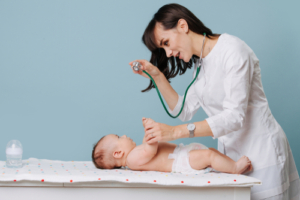
Infants and toddlers under age three should have an eye exam. During this exam, the doctor will look for developmental abnormalities like misaligned or lazy eyes. At this first eye exam, your child’s pediatrician will usually perform the exam.
If you are concerned about your child’s vision, you can request that an eye doctor perform more extensive testing.
Children ages three to five should have at least one eye exam. These appointments assess vision and abnormalities while your child is growing.
Vision assessments for children include looking at eye alignment and depth of field. The eye doctor will also check for abnormalities like astigmatism, near-sightedness, far-sightedness, or other developmental disorders.
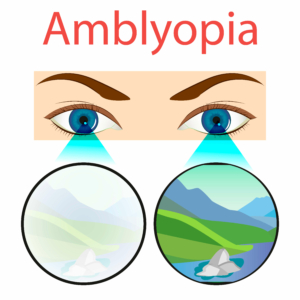
Amblyopia, also known as lazy eye, is a common condition for children old enough to go to preschool. Children with amblyopia have one eye that doesn’t see as clearly as the other. Two to three out of 100 kids develop this genetic condition.
Misalignment of the eyes is another common condition in children. Misalignment of the eyes is called strabismus.
This misalignment may be minimal enough that parents or guardians don’t notice. Many children don’t realize when they have a lazy eye.
Failure to treat this misalignment can cause lasting vision development problems in childhood and adulthood. It may also burden a child’s self-confidence if classmates bully them in school.
Treating amblyopia and strabismus before a child reaches age 10 offers the best chance to fix the imbalance
Ages 5 through 19
Children and teens often discover vision issues as they start formal education. Common vision issues at these ages include struggling to read the board or finding it difficult to get through online lessons.
Some schools perform basic vision screenings. A vision screening cannot diagnose optical issues and isn’t the same as an eye exam. They only show that a child or teen should visit an eye doctor for a more thorough eye exam.
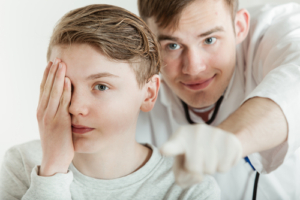
An eye doctor may diagnose your child with nearsightedness, farsightedness, or astigmatism. These are refractive errors that millions of people suffer from due to light not refracting correctly through the eye.
This leads to blurry and distorted vision. Using contacts or glasses can improve the quality of life for young people.
Children and teens should have at least one eye exam. This also provides an opportunity to diagnose and treat other eye diseases.
Early diagnosis and treatment of eye conditions is the best way to ensure that any remaining vision is preserved, no matter what age you are.
Ages 20 through 39
When to get eye exams in your twenties and thirties depends on the patient. For those who don’t wear glasses or contact lenses, eye exams may be sufficient every two or three years.
But for those that wear glasses and contacts, annual eye exams are a must. This ensures that your prescriptions are up to date and your eyes are healthy.
Those with chronic diseases with higher eye disease rates like diabetes should talk with their eye doctors about how often they need eye exams. If your diabetes or blood sugar levels aren’t under control, your ophthalmologist or optometrist may want to see you more often.
Having diabetes already puts you at a higher risk for developing conditions like diabetic retinopathy. If you’re unsure how often you should be seeing your eye doctor, ask them for a recommendation about what schedule you should follow.
Ages 40 to 64
If you’re in your forties or fifties, this is a time that many people begin to notice age-related vision loss. It may start with something as simple as having difficulty reading and seeing at close distances in your early or mid-forties.
Unfortunately, this is something that will likely only get worse as you get older. Age-related farsightedness (often called presbyopia) progresses with age as your eyes struggle to focus.
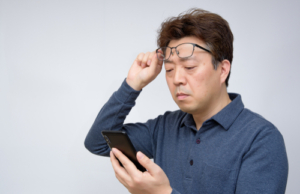
Middle-aged adults may hold reading material away from their faces to reduce blurriness. You may also need better lighting to read or do close-up activities.
It is also more common to experience reduced tear production. Women are more likely to have this issue due to hormone changes.
Your eye doctor may recommend taking daily prescription eye drops to treat dryness.
Attend eye exams every two to four years during this period if you don’t have any existing eye problems. Keeping a regular schedule will help diagnose problems early.
People with high blood pressure or high cholesterol may need more frequent exams. If you fall into this category, you’re at a higher risk of developing serious eye problems.
Ages 60 and older
Once you are at least 60 years old, you should see your eye doctor for an eye exam every year. This should be the case even if you don’t have any existing eye problems.
Age-related sight issues may limit activities like reading without professional care. Look out for the loss of peripheral vision, glare, or having difficulty seeing in low light.
Schedule an appointment to see your eye doctor if you notice any sudden vision changes or think you need a different prescription. Sudden vision changes should be treated as something serious until you have everything ruled out.
Talk with your physician if you take prescription medications. Your medications can often interfere with your vision or cause symptoms like dry eyes, especially antihistamines.
Be careful when taking corticosteroids, as long-term use can increase your chance of developing cataracts or glaucoma.
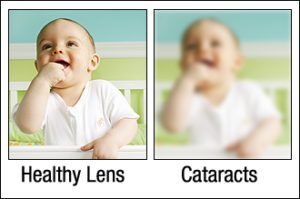
You may struggle to see when you have cataracts. This can include other signs like blurry vision, double vision, and becoming more sensitive to light, among many others.
Another frustrating thing you might notice when you have cataracts is seeing glare while driving, especially at night. If you feel unsafe while driving, find a family member or trusted friend that can get you where you need to go until you can have cataract surgery.
Eye exams are a crucial part of healthy eyes, no matter what age you may be. At Eye Consultants of North Dakota, we offer eye exams at our innovative clinics in Fargo.
The experienced team focuses on corneal health, pediatric eye exams, and addressing conditions like glaucoma and macular degeneration.
Looking for an eye care practice to take care of your whole family? Schedule an appointment at Eye Consultants of North Dakota in Fargo, ND, today!



